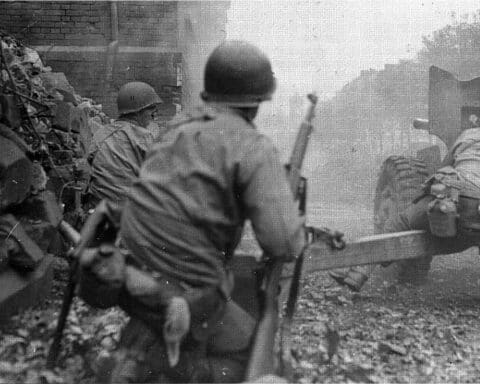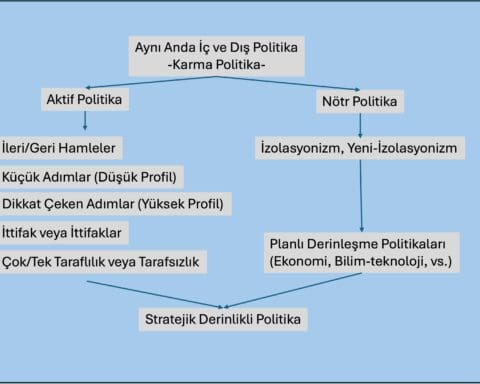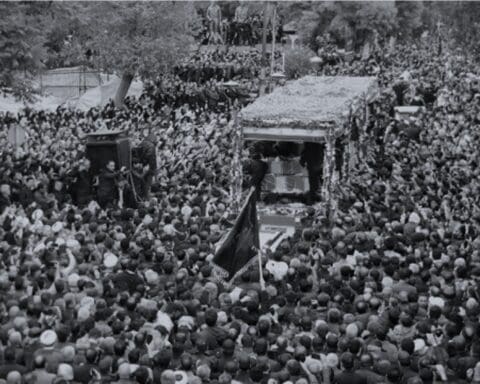In this article, you will find clues about the security guarantees given by the USA to Russia, the Putin Doctrine, the Eurasian Economic Union project, the importance of Ukraine, the idea of the Organization for Security and Cooperation in Europe (OSCE), North Atlantic Treaty Organization (NATO), and the Helsinki Declaration. We will evaluate what we should understand when you read all these together.
After World War II and the Cold War, the shaping and security of Europe was not easy. In fact, it was not easy for the European Union (EU) project to come to these days. These were the result of complementary issues, difficulties and agreements reached based on the solutions found. For example, the closeness of Europe to the Ukraine issue cannot be expressed with such an imperialist approach. Moreover, Russia and its pro-Russians use the word imperialist or similar for some reason very easily.
Today (just like the USA), the Russian Federation uses its opportunities to develop its interests, takes risks as a country and fights according to itself. So, what is the situation according to those who want peace? It is the continuation of the agreements made so far, the continuation of peace and stability, and of course the revival of human rights.
It emerged during the meeting of Blinken and Lavrov in Geneva, according to which Russia asked the USA for a written assurance. The document presented to them contains a principled and pragmatic assessment of the concerns raised by Russia, prepared by the United States and the allies, and includes recommendations for areas where mutually a common ground for solutions can be found. In the response to the security guarantees given to Russia, emphasis was placed on “the principle that Ukraine is essentially committed to protecting and defending the sovereignty and territorial integrity of Ukraine, including the right of other states to choose their own security arrangements and alliances”.
Many times in the past, Russia and the United States, along with their partners, have sat down to sign agreements necessary to “increase transparency, reduce the risk of military conflict, advance arms control agreements and build trust.” No one should need to be reminded of this fact today, especially the signatories of the agreements, and that’s what the OSCE is for.
Today, the Russian side says, “Let’s find a way to de-escalate, discuss how we can improve transparency, and talk about the peaceful resolution of conflicts, let’s talk about concrete ways to promote peace and build trust.” For the OSCE, the situation is clear.
Let’s remember something like this. While the US and the Soviets were negotiating SALT-II on the reduction of strategic nuclear weapons, the new détente environment was mentioned. Negotiations for the establishment of a security and cooperation system in Europe (CSCE) and the mutual and balanced reduction of forces (MBFR) began. On 1 August 1975, 35 countries signed the Final Act and the Helsinki Declaration. NATO from the West and the Warsaw Pact from the Eastern Bloc already existed in this process since 1968. The Warsaw Pact, on the other hand, published the Declaration on the Strengthening of Peace and Security in Europe in Bucharest in 1966 and declared that they needed the idea of a European Conference. NATO published the Harmel Report in 1967. In 1968, a mutual softening decision was made in Rejkjavik. However, the same year the Soviets invaded Czechoslovakia. Here the Brezhnev Doctrine was introduced. Briefly, the Brezhnev Doctrine meant “the putting into orbit of satellite states close to the Soviets”. It is necessary to understand that these invading political attempts of the Russians are not only in the Crimea.
In 1969 there was a Nuclear Non-Proliferation (NPT) agreement, which paved the way for the USA and Russia to join SALT-I.
Then, the issue of Opening to the East, that is, Ostpolitik, came to the fore in Germany. The motto of unification with East Germany: One Nation, Two States. In 1970 the Warsaw (Border) Agreement was signed between the Federal Republic of Germany and Poland. This agreement reorganized the borders. This move brought the advantage of having a say in East-West Germany. Moreover, Moscow was the guarantor in this agreement. First, SALT-I was signed between the USA and Russia. A week later, four countries, Germany, Poland, Soviet Russia, and the United States, signed the Warsaw Treaty of 1972.
The European Security Conference began in 1973. Then the final deed in Helsinki was signed in 1975. There are four baskets in this agreement: The first basket is Issues of European Security. The first part of this is the 10 Basic Principles.
What are these 10 Basic Principles? 1) Sovereign equality and respect for the rights entailed by sovereignty. 2) Avoiding threats and the use of force. 3) The principle of inviolability of borders. 4) Territorial integrity of states. 5) Settlement of disputes by peaceful means. 6) Not to interfere with your internal affairs. 7) Respect for human rights and fundamental freedoms, including freedom of thought, conscience, religion and belief. 8) Equal rights of nations and the right to self-determination. 9) Cooperation between states. 10) Fulfilling the commitments imposed by International Law in good faith.
Another part of the first basket is the Document on Confidence Building Measures, Some Aspects of Security and Disarmament. The second basket includes Cooperation on Economic, Science and Technology and Environmental Protection Issues. The third basket, Cooperation in Humanitarian and Other Fields; the fourth basket is Monitoring Considerations.
In these conditions, it is seen that Russia does not comply with the Minsk commitments, it is expected to comply with the agreements to the letter.
After the Cold War, the West set about solving three issues: 1) What should the alliance look like? 2) How should relations with former Soviet satellites be in Eastern Europe? 3) How should relations with the Russian Federation be? In these three issues, processes of cooperation with the interlocutors and self-sacrifice for the West emerged. Every country and institution in the region took part in the business. The main thing was that the adaptation process was experienced quickly. The Partnership for Peace (PfP) program begins. This program included responsibilities under both the OSCE and NATO. Joint political and economic projects were carried out.
In January 2022, Putin asked the US for assurances and got the answer, he is thinking about what to do now. Putin will go to and from Beijing and make it clear what to do. But yesterday Lavrov came out and said, “We don’t want war in Ukraine.” In other words, while explaining the reason for having additional troops in Ukraine and even Belarus, the Russian administration stated that the main purpose was “protecting Russia”. He did not say that he would “leave the annexed areas in Ukraine, stop the Gray Zone Operations carried out there, or give up on sphere of influence”. To say “we do not fight for Ukraine” does not mean “we will reduce or withdraw nuclear missile systems newly deployed in Kaliningrad”.
However, Europe is at the center of this tension. There is the OSCE and the Helsinki Agreement. Like more than thirty countries, Turkey is also involved in these agreements and institutional structures and is already a party from this perspective, “to ensure the continuation of peace and stability” is essential. After all, Europe looks at the established security architecture. In this case, the USA is also a party. The USA, the USSR and the OSCE established this system together, while the Russian Federation was established, it accepted all the agreements and went to a new formation, as it is known, the Commonwealth of Independent States (CIS) was established. Now Russia asked for assurances and in return was told by the US, “You have to abide by the tripartite agreements, the OSCE and the Declaration of Helsinki.”
While Gorbachev was dissolving the USSR, he accepted full adherence to the 1975 Helsinki Final Act, and he asked his interlocutors to do so. One of the most important issues that were emphasized while the USSR was disintegrating was the concept of “satellite states”. This concept of “satellite” was acceptable when the USSR was strong. Since there is no USSR today, what can be talked about in this topic? Until the Russian Federation got stronger again (let’s say until 2014, there are clues about it) there was little reflection of whatever was written in the agreements, but when they were sure of their strengthening, the issue of “satellite states” and “zones of influence” resurfaced. Ukraine, for example, was a satellite state; but today it wants to break away from Russia and join the European Union. At this point, Russia says: “You can’t touch my Satellite State!”
As reflected in subsequent OSCE documents, including the United Nations (UN) Charter, the Helsinki Final Act, and the 1990 Paris Charter, international order operates by rules. The basic principles were institutionalized with the OSCE. If it is possible to take it back in one move, with what will and justification will it be done? There is the 1999 European Security Charter and the 2010 Astana Summit Commemorative Declaration. These refer to documents that reinforce agreements. Of course, the name of the crisis is not Ukraine, it is about the security of Europe, as I have said from the beginning and at every opportunity. If Russia is given this opportunity, the extent of the crisis will exceed Europe and become global. But small thinkers want to talk about the tanks lined up on the borders of a few countries today!
Let’s move on to the recovery of Russia in 2014. You already know that it is the year of the occupation of Crimea. Let me remind you of the Putin Doctrine (see at least Putin’s speeches at the Valdai Club-2013 on this subject): There is a Russian world (a common church, a common spiritual resource and a common destiny). This is central power. The Russian-Ukrainian community therefore forms the core of the Russian world (satellites), all Russian-speaking communities in the post-Soviet region form its core area, and in the broadest sense, the term includes people worldwide who meet these three criteria. This ensures the establishment of a Eurasian Economic Union. The obstacle to this comes from the USA and Europe, NATO and the European Union bind the satellite countries of the union. Putin also makes it clear that the social engineering of the West during the current crisis is aimed at Ukraine, Russia and “Eurasian integration” (as well as Eurasianism).
Putin gives important and critical goals to his citizens in his own country. This goes beyond the borders of its own citizens, so much so that it admits that it has annexed spheres of influence (satellite states). In fact, it is also interested in other non-Russian-speaking and non-Orthodox countries in order to weaken NATO, which is positioned against it, and the hand of the USA and EU countries. It includes these countries in the Gray Zone. Putin is doing a Eurasian project for the expansion of his country’s interests, as if a new kind of European Union and Anglosphere-like power formation. While pulling its own citizens to the side of an idea, it wants to drag those who join it with it. In fact, it presents an existing and unreal formation as an “ideal project” to those who want to join it. How believable can that be? This is also a risky area for others.
The issue of international relations and strategy stand before us in a confused way: Ukraine.
Ukraine is the most important target for Russia today (the national target), the first step towards its grand ideal. However, the real issue is that Russia, despite the USA and Europe and despite international commitments, has the interest that creates a space for itself in accordance with the Putin Doctrine. There is no justification for the use of military units (hard power) in the existing agreements, even to cause difficulties for those who signed the agreements with diplomatic mistakes.
Under these circumstances, do the USA and Europe not know what Putin wants to do? Yeah. No problem here. The problem is that other interests also have to know. On the other hand, can the US and Europe respond to the high-value risk that Russia can take? Yeah. Likewise, the problem is that other interested parties also make good risk calculations.
NOTE: Due to intellectual property rights, you can use this information by reference.
Gursel Tokmakoglu











